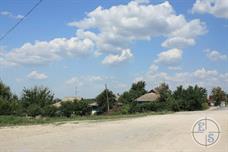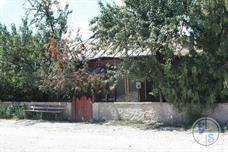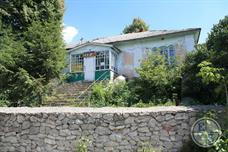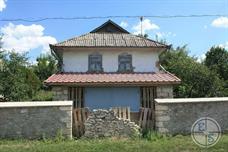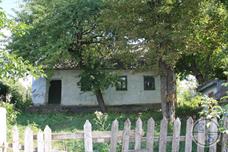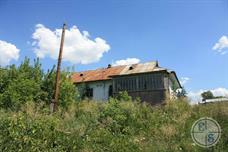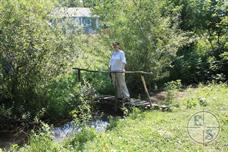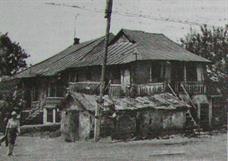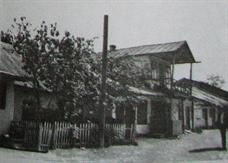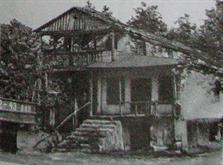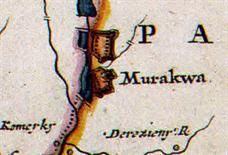Murafa
Murafa, 2012
Murafa - one of the oldest settlements on the border of Podolsk and Bratslav provinces.
Since the mid-1580s. land at the confluence of the river Klekotiny Murafa acquired in the elder Prince Snyatyn M. Yazlovetsky. At the village Verhnyaki he built the castle and laid the town, which at first was called Raygrodom then Nowogrod, then Klokotinom and finally Morahvoy.
In 1629 was Murafa border town of Podolsk province. Compared with other settlements province, Murafa with more than three thousandth the population was a large city. Register podymnogo tax in 1629 are 607 registered homes.
In February 1651, Polish troops stormed and devastated Murafa, the former (for Zbarouski peace treaty in 1649) a border stronghold of the Cossacks in military-administrative district Bratslav regiment.
After the Second Partition of Poland in 1793 as part of a place Murafa Old and New, belonging to different owners, it was included in the district Yampolsky Podolia.
In 1831, after the Polish uprising, which was attended by one of the owners of the town, New Murafa moved to the state, and by the end of the XIX century. and Old Murafa also was owned by the state treasury.
In 1831, after the Polish uprising, which was attended by one of the owners of the town, New Murafa moved to the state, and by the end of the XIX century. and Old Murafa also was owned by the state treasury.
Jews settled in fortified and located on the trading path Murafa city in the first half of the XVII century. At that time (1629) was Murafa border town of Podolsk province. Compared with other settlements province, Murafa with more than three thousandth the population was a large city. Register podymnogo tax in 1629 are 607 registered homes.
The first mention Murafa community in Lviv responsa of Rabbi Abraham Cohen Rappaport dates back to 1647 and is connected with the complaint on the community of Bar-informer Jew ( "Moser") of Murafa.
According to some sources at the beginning of the Cossack War 1648 - 1649 gg. Murafa was divided confrontation line Cossack and Polish troops: Cossacks settled on the territory of the future of the Old Murafa and Poles entrenched in the territory of the New. The martyrology "gayaven Titus' destruction of the Jewish communities referred to a town called Sharm (or Mrahva), where there were twenty Jewish householders; They fled from the village, after which their fate was not known.
The first mention Murafa community in Lviv responsa of Rabbi Abraham Cohen Rappaport dates back to 1647 and is connected with the complaint on the community of Bar-informer Jew ( "Moser") of Murafa.
According to some sources at the beginning of the Cossack War 1648 - 1649 gg. Murafa was divided confrontation line Cossack and Polish troops: Cossacks settled on the territory of the future of the Old Murafa and Poles entrenched in the territory of the New. The martyrology "gayaven Titus' destruction of the Jewish communities referred to a town called Sharm (or Mrahva), where there were twenty Jewish householders; They fled from the village, after which their fate was not known.
In the context of ongoing hostilities, bloodshed and destruction (spring and autumn 1654, spring 1655) no fortifications, no extensive network of underground tunnels were not for the reliable protection of the Jews: The Story of the Jewish community Murafa interrupted for several decades.
With the end of the Turkish occupation of the Territory (1672-1699) in the newly returned Murafa its owners Potocki. Probably, at this time Jews settled here again and eventually made up the majority of "urban" population of the town: home of the Jews formed a central shopping street in both its parts.
With the end of the Turkish occupation of the Territory (1672-1699) in the newly returned Murafa its owners Potocki. Probably, at this time Jews settled here again and eventually made up the majority of "urban" population of the town: home of the Jews formed a central shopping street in both its parts.
Since the summer of 1734 on the Bratslav frequent looting and riots; Murafa been robberies Haidamaks summer 1735 Owner Count Potocki half the town on its own behalf and on behalf of the heirs of Jewish victims complained of thugs-the peasants in the court of Bratslav province.
Censuses in 1765 in the Old and New Murafa were registered respectively 221 and 115 Jews, Jewish homes in Old Murafa - 90, in New - 49.
In 1871, there were 175 Murafa Old and New - 266 houses. On the right bank of the river near Murafa Slobodka Murafskoy were built barracks and army units deployed. Their neighborhood is subsequently shielded Murafa community from pogroms that swept Ukraine in 1881-1882 and in 1905 - 1906.
During the XIX century. in the Old and New Murafa were separate communities.
At the beginning of the XIX century. Murafa Jews became followers of Hasidism.
In the second half of the XIX century. each of the two communities held a stone synagogue and house of prayer: four "spiritual rule" was recorded in 1889 in all Murafa.
At the beginning of the XIX century. Murafa Jews became followers of Hasidism.
In the second half of the XIX century. each of the two communities held a stone synagogue and house of prayer: four "spiritual rule" was recorded in 1889 in all Murafa.
Almost all industrial and commercial activities of the town was carried out by Jews.
In the years 1910-1914. in Old Murafa lived 180 Jewish families.
The Civil War turned to Murafa Jewish tragedy. June 17, 1919 (according to other sources, 15 -18 July), 1st Cavalry Regiment Lubensk directories arranged in the village massacre, which lasted three days. Mobs killed 64 Jews, and left behind a totally ravaged town with a lot of wounded and raped, 66 orphans and 33 widows.
In the years 1910-1914. in Old Murafa lived 180 Jewish families.
The Civil War turned to Murafa Jewish tragedy. June 17, 1919 (according to other sources, 15 -18 July), 1st Cavalry Regiment Lubensk directories arranged in the village massacre, which lasted three days. Mobs killed 64 Jews, and left behind a totally ravaged town with a lot of wounded and raped, 66 orphans and 33 widows.
In the first half of the 1920s in Murafa, where there were about two thousand Jews were "quite strong old traditions and customs." Most of the children were brought to cheder, and opened in the early 1920s, almost no Jewish school was visited.
Until the mid-1920s. community-based institutions in Murafa funded long zavedёnnym order - at the expense of shechita. Shoikhet and Rabbi rented from the state slaughterhouse, and then Shoikhet p. Yitzhak Leib Genelis assigning price for slaughter cattle, he acted as a traditional "baltakse" - fundraiser to community needs. To eliminate the old "box" and that undermine the economic independence of communities, local authorities in July 1925 terminated the lease with the former Shoikhet.
Many residents have been merged into a production cooperative, the local village council there were 18 Jews.
In 1923 there lived 1229 Jews.
Until the mid-1920s. community-based institutions in Murafa funded long zavedёnnym order - at the expense of shechita. Shoikhet and Rabbi rented from the state slaughterhouse, and then Shoikhet p. Yitzhak Leib Genelis assigning price for slaughter cattle, he acted as a traditional "baltakse" - fundraiser to community needs. To eliminate the old "box" and that undermine the economic independence of communities, local authorities in July 1925 terminated the lease with the former Shoikhet.
Many residents have been merged into a production cooperative, the local village council there were 18 Jews.
In 1923 there lived 1229 Jews.
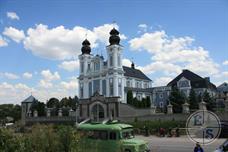 |
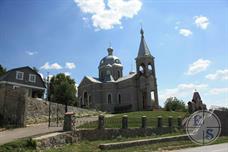 |
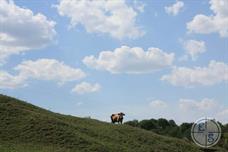 |
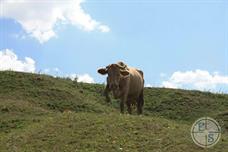 |
| Church of the Dominican monastery, 1627 | |||
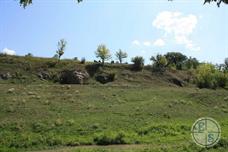 |
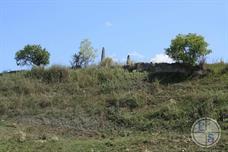 |
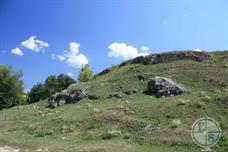 |
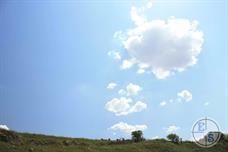 |
| The Jewish cemetery is located on a hill beyond the river Klekotina | |||
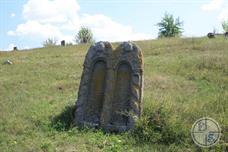 |
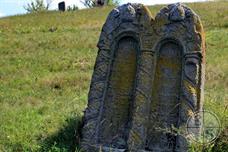 |
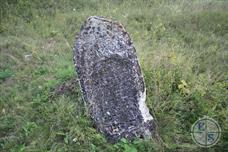 |
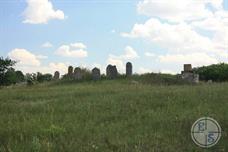 |
| On the old site preserved tombstone in the middle of the XVIII | |||
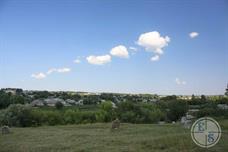 |
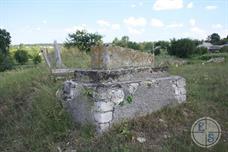 |
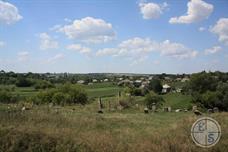 |
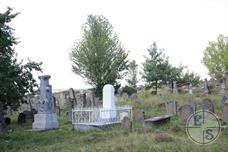 |
Shoah
German and Romanian troops occupied Murafa July 20, 1941 Many families were able to evacuate, but the fall of 1941 was not less than 800 Jews in the town. In autumn and winter 1941 -1942 gg. here it was deported about 4,000 Romanian Jews. Most of them settled in the Old Murafa, in the homes of Jews and Ukrainians, as well as in public buildings. Because of the high population density in the winter it is raging typhus epidemic.
At the beginning of 1942 Murafa Community Council was established, consisting of Romanian Jews, and the Jewish police; these bodies were responsible for the selection of Jews for forced labor: clearing snow and road construction. In Romania sent from money and funds from taxes, which municipal council overlaid Murafa Jews were organized free kitchen, a hospital with 25 beds, a pharmacy, a school and a kindergarten. Autumn of 1942, an orphanage with 30 seats, which at first was placed in the room of an apartment house was opened, and then - in several areas of the school building.
German and Romanian troops occupied Murafa July 20, 1941 Many families were able to evacuate, but the fall of 1941 was not less than 800 Jews in the town. In autumn and winter 1941 -1942 gg. here it was deported about 4,000 Romanian Jews. Most of them settled in the Old Murafa, in the homes of Jews and Ukrainians, as well as in public buildings. Because of the high population density in the winter it is raging typhus epidemic.
At the beginning of 1942 Murafa Community Council was established, consisting of Romanian Jews, and the Jewish police; these bodies were responsible for the selection of Jews for forced labor: clearing snow and road construction. In Romania sent from money and funds from taxes, which municipal council overlaid Murafa Jews were organized free kitchen, a hospital with 25 beds, a pharmacy, a school and a kindergarten. Autumn of 1942, an orphanage with 30 seats, which at first was placed in the room of an apartment house was opened, and then - in several areas of the school building.
In spring 1943, one of the farmers accused the local Jews of ritual murder of his daughter. Since the girl really gone, peasants threatened to destroy all the Jews Murafa. Only thanks to the energetic measures of the Romanian gendarmes, who received a bribe of significant size, the girl was found.
March 19, 1944 Murafa was occupied by guerrilla unit led by two local Jews, and on March 20 Murafa entered the Red Army.
Murafa Jewish community survived the years of occupation. In the postwar decades, Jews have left the settlement, leaving the cities, and in the early 1990s. - abroad. In 2012. Jews do not live in Murafa.
V.Lukin, "100 Jewish settlements in Ukraine"
March 19, 1944 Murafa was occupied by guerrilla unit led by two local Jews, and on March 20 Murafa entered the Red Army.
Murafa Jewish community survived the years of occupation. In the postwar decades, Jews have left the settlement, leaving the cities, and in the early 1990s. - abroad. In 2012. Jews do not live in Murafa.
V.Lukin, "100 Jewish settlements in Ukraine"
On the main street of Friendship you can still see some old nice houses of the Jewish shtetl building
Vinnitsa Region

My shtetl
My shtetl
Jewish towns of Ukraine
Jewish towns of Ukraine
